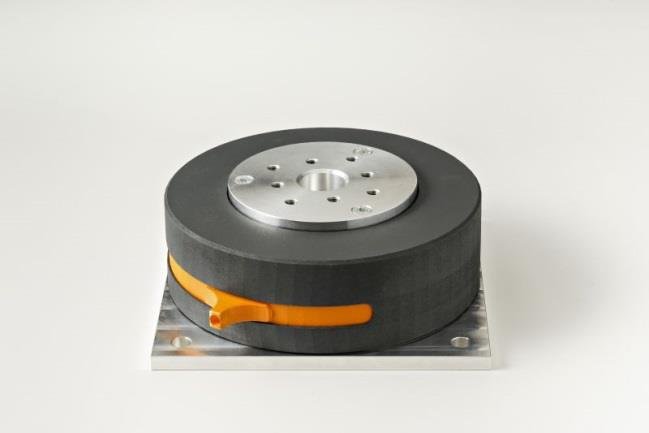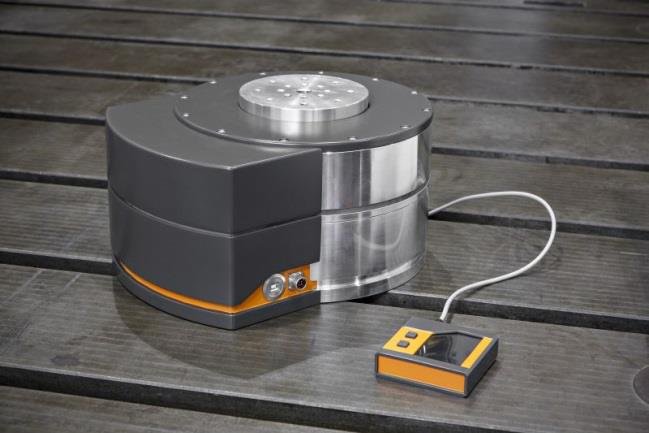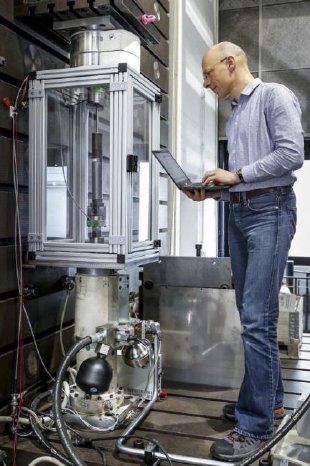The research team from Darmstadt developed tunable components and a mechanical hardware-in-the-loop interface. Tunable components allow continuous adjustment of mechanical characteristics. For example, mounts with tunable stiffness enable testing of a test specimen under different boundary conditions or the implementation of tunable vibration absorbers.
If tunable rubber mounts are used as a development tool, with stiffness and damping adjustable independently of each other, it is possible to forgo the first bearing prototypes. This makes it possible to provide the mount manufacturer with optimized specifications at an early stage of development. Mechanical hardware-in-the-loop interfaces can be used to simulate more complex boundary conditions in experiments, especially in the field of NVH development. The interface behaves equivalent to a underlying numerical model in a wide frequency range. For example, an adaptive shock absorber can be tested for different combinations of top mount and chassis without carring out any modifications to the testing bench.
»The transfer of numerical simulation methods into the physical world of testing makes it possible for development processes to be drastically accelerated and costs to be reduced. Furthermore, our technologies and test rig components offer new possibilities for validation of numerical simulation models. Models can be validated for different operating points with less effort«, says Jan Hansmann, research associate and project manager at the Fraunhofer LBF. Next, the research team from Darmstadt wants to work on the series-production implementation, which requires close cooperation with industrial partners.




